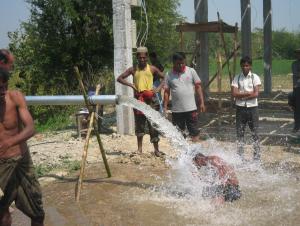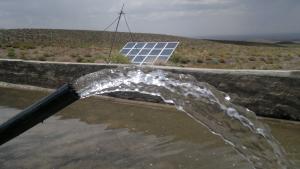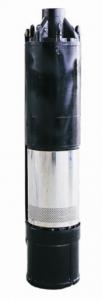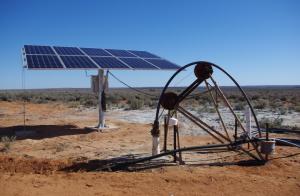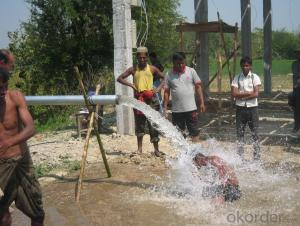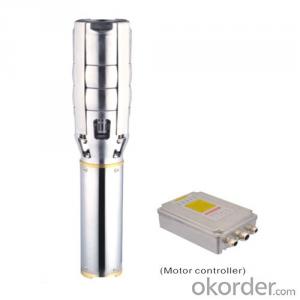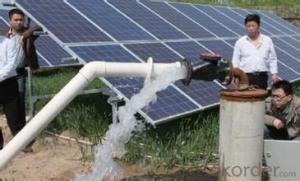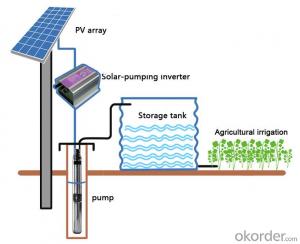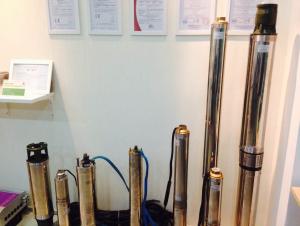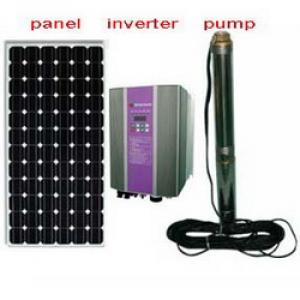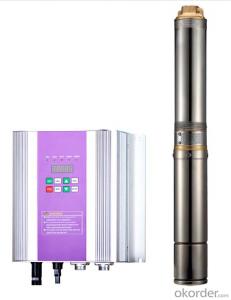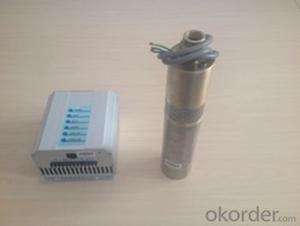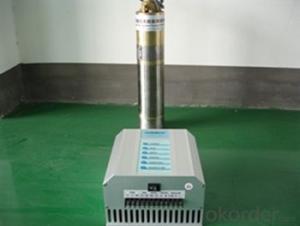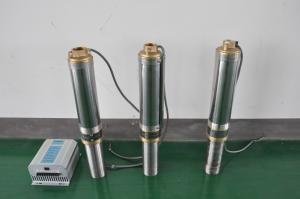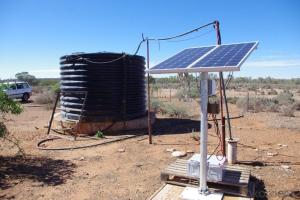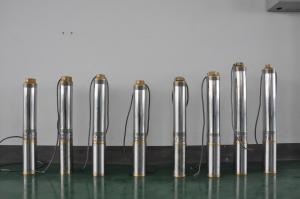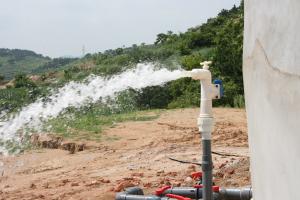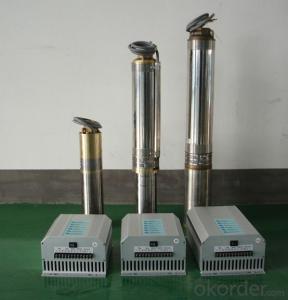Kusum Solar Pump - DC Solar Pumping Systems Popular Type Good Quality
- Loading Port:
- Shekou
- Payment Terms:
- TT OR LC
- Min Order Qty:
- 10 set
- Supply Capability:
- 6000000 set/month
OKorder Service Pledge
OKorder Financial Service
You Might Also Like
Products
DC Solar Pumping System can be applied to daily use (ground water), agricultural irrigation, forestry irrigation, desert control, pasture animal husbandry, water supply for islands, wastewater treatment engineering, and so on. Solar water pump System is dispensed with energy storing devices, and stores water instead of electricity. It improves the reliability of the device, at the same time, it lowers the construction and maintenance costs of the irrigation system dramatically.
In recent years, with the promotion of the utilization of new energy resources, Solar Pumping System is more and more used in municipal engineering, city centre squares, parks, tourist sites, resorts and hotels, the landscapes and fountain irrigation systems in the residential areas.
Technical Features
Optimization of Single Pump System
A single solar irrigation system consists of only one pump, a power -matched solar array and an inverter . The aim of optimization is to reduce the amount of PV modules as much as possible on the premise of filling the requirement of head and capacity. The rotational speed of pump is regulated according to the irradiation on the solar array; when the sunlight reaches its peak, the pump runs at the rated speed, and the output approaches the peak power of the solar array; when the sunlight is less abundant, the speed of pump varies bellow the range of the rated speed; when the speed as low as the capacity becomes zero, the solar pumping system stops working. So, there are big differences between solar irriation systems and traditional pumping systems in system design, and the system should be optimized according to the requirements of head, capacity, and local conditions of sunlight.
•Determine the optimal average daily operating time and the range of speed governing.
•Choose the optimal head and capacity of the pump.
•Determine the maximum power of PV modules, the best working voltage and method of connection.
Optimization of Multi-pump Systems:
There are several pumps in a multi-pump system. The pumps can be driven either by only one high-power inverter, or by several matching inverters. In the case of large capacity demand, the operation of the multi-pump system is more flexible. By switching solar arrays and pumps, all of the pumps run in MPPT mode when the sunlight is abundant, while some pumps will be shut down and all solar arrays supply power intensively for the rest running pumps when irradiation is weak. Based on the optimization of single pump system, the range of speed can be further optimized, and the photovoltaic(PV) pumping system always works with high efficiency.
Product Specifications
Model | Rated Power | Max. Flow | Max. Lift | Daily Water Supply | Outlet Dia. | Pump Dia. |
PSD600C | 600W | 4.5 m3/h | 30 m | 10 - 20 m3 | 1"1/4 | 4" |
PSD600H | 600W | 2 m3/h | 100 m | 5 - 10 m3 | 1"1/4 | 4" |
Solar Array Configuration
Max. Input Power | Max. Input Current | Max. Open Circuit Voltage | Recommended MPP Voltage |
1000W | 15A | 150VDC | 60 - 120VDC |
Recommended Design | Solar Panel | Connection | Total Power |
Configuration 1 | 190W / 35Vmp | 2 pcs x 2 strings | 760W |
Configuration 2 | 250W / 30Vmp | 3 pcs x 1 string | 750W |
Performance Curve
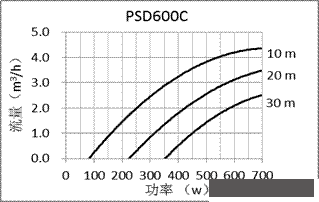
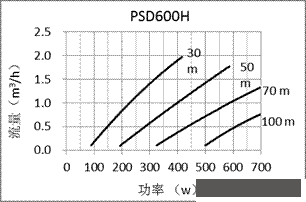
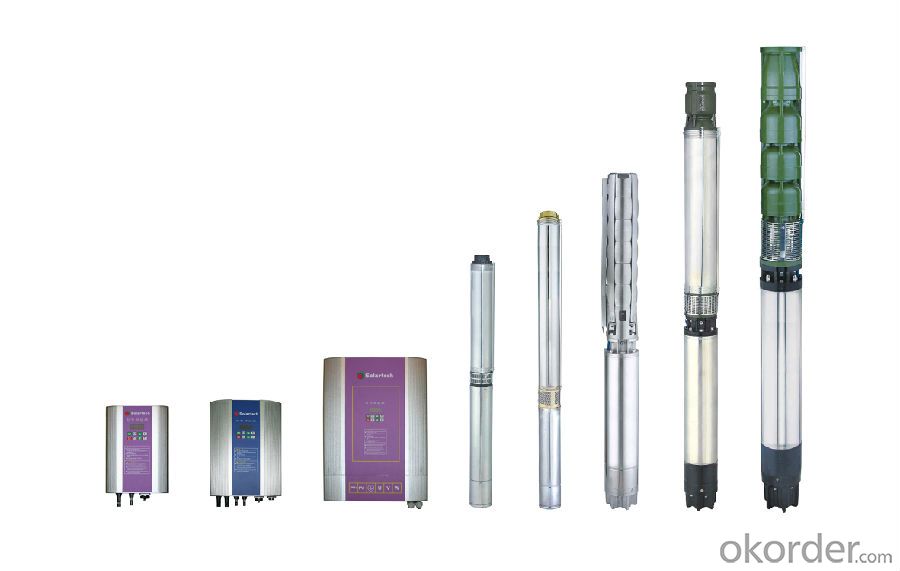
- Q: Can a solar pump be used in areas with limited access to water storage?
- Yes, a solar pump can be used in areas with limited access to water storage. Solar pumps are designed to operate independently of a grid or electricity supply, utilizing solar energy to pump water from a source such as a well or a water body. They can be used in remote areas where access to water storage may be limited, providing a reliable and sustainable solution for water supply.
- Q: How does the size of the solar panel affect the performance of the pump?
- The size of the solar panel has a direct impact on the performance of the pump. A larger solar panel generally means a higher capacity to absorb sunlight and convert it into electricity. This results in a greater amount of energy being available to power the pump. As a result, the pump can operate at a higher flow rate or pressure, allowing it to deliver more water or perform more effectively. On the other hand, a smaller solar panel may have a lower capacity to generate electricity. This can limit the amount of energy available to power the pump, resulting in reduced performance. The pump may operate at a lower flow rate or pressure, which can limit its ability to deliver water or perform optimally. Additionally, the size of the solar panel also affects the amount of energy stored in the system's battery. A larger solar panel can generate more excess electricity, which can be stored in the battery for use during cloudy or low sunlight periods. This ensures a more consistent and reliable performance of the pump, even in less favorable weather conditions. In summary, the size of the solar panel directly influences the performance of the pump by determining the amount of energy available for operation. A larger solar panel generally leads to better performance, while a smaller one may result in reduced efficiency and output.
- Q: Can a solar pump be used for water circulation in a swimming pool?
- Yes, a solar pump can be used for water circulation in a swimming pool. Solar pumps are designed to use energy from the sun to power the circulation of water. They are environmentally friendly and cost-effective options for maintaining water circulation and filtration in a swimming pool.
- Q: How does the size of the water reservoir affect the performance of a solar pump?
- The size of the water reservoir can have an impact on the performance of a solar pump. A larger reservoir allows for more water storage, which can provide a consistent and steady water supply to the pump. This can enhance the pump's efficiency and performance, as it can operate for longer periods without interruption. Additionally, a larger reservoir can help mitigate the effects of fluctuations in solar energy availability, ensuring a more reliable water pumping system overall.
- Q: Can a solar pump be used for water supply in schools or hospitals?
- Yes, a solar pump can definitely be used for water supply in schools or hospitals. Solar pumps are an efficient and cost-effective solution for providing clean water in remote areas or locations with limited access to electricity. They can help ensure a reliable water supply for essential needs such as drinking, sanitation, and various medical purposes. Additionally, solar pumps are environmentally friendly as they use renewable energy, making them a sustainable choice for schools and hospitals.
- Q: What is the required maintenance for the pump controller?
- The required maintenance for a pump controller typically includes regular inspection and cleaning of the controller unit, checking and tightening any loose connections, ensuring proper electrical grounding, and monitoring for any signs of wear or damage. It is also important to regularly test the pump controller's functionality and performance, and to promptly address any issues or malfunctions that may arise.
- Q: Can a solar pump be used in areas with limited access to water extraction?
- Yes, a solar pump can be used in areas with limited access to water extraction. Solar pumps are a viable solution in such areas as they rely on renewable energy from the sun to operate, eliminating the need for grid electricity or fuel. This makes them suitable for remote locations where traditional water extraction methods may not be available or practical. Solar pumps can efficiently extract water from various sources such as wells, boreholes, rivers, or lakes, providing a sustainable and reliable water supply in areas with limited access to water extraction.
- Q: What is the lifespan of the solar panels used in a solar pump system?
- The lifespan of solar panels used in a solar pump system can vary depending on various factors such as the quality of the panels, their maintenance, and the environmental conditions they are subjected to. Generally, high-quality solar panels can have a lifespan of around 25 to 30 years. However, regular maintenance and proper care can help extend their lifespan even further.
- Q: Can a solar pump be installed in areas with extreme temperatures?
- Indeed, areas with extreme temperatures can accommodate the installation of a solar pump. These pumps are engineered to endure a broad spectrum of temperatures, encompassing both scorching heat and freezing cold. Nevertheless, it is crucial to meticulously evaluate the distinct conditions and prerequisites of the area prior to embarking on the installation of a solar pump. The efficacy and functionality of the pump may be impacted by the extreme temperatures, thus it is prudent to opt for a pump that aligns with the temperature range specific to the area. Moreover, it is imperative to implement adequate insulation and protective measures to avert any potential harm that may be inflicted upon the pump due to the extremity of the temperatures.
- Q: How does the efficiency of a solar pump system vary with different pipe sizes?
- The efficiency of a solar pump system can vary depending on the size of the pipes used. The flow rate and pressure of the system are directly influenced by the size of the pipes. In general, when larger pipes are used, the flow rates can be increased and the pressure losses can be reduced. This results in higher efficiency because larger pipes have less friction, allowing the water to flow more easily. Consequently, the pump does not have to exert as much effort to move the water through the system, which leads to improved energy efficiency. On the contrary, if smaller pipes are used, there can be increased pressure losses and reduced flow rates. This can adversely affect the efficiency of the solar pump system. Smaller pipes have more friction, causing the pump to work harder in order to maintain the desired flow rate. This can result in higher energy consumption and reduced efficiency. It is important to consider that the optimal pipe size for a solar pump system depends on various factors, such as the desired flow rate, distance, elevation changes, and the capabilities of the specific pump being used. Seeking advice from a professional or conducting hydraulic calculations can help determine the ideal pipe size for a given system, ensuring maximum efficiency.
Send your message to us
Kusum Solar Pump - DC Solar Pumping Systems Popular Type Good Quality
- Loading Port:
- Shekou
- Payment Terms:
- TT OR LC
- Min Order Qty:
- 10 set
- Supply Capability:
- 6000000 set/month
OKorder Service Pledge
OKorder Financial Service
Similar products
Hot products
Hot Searches
Related keywords
